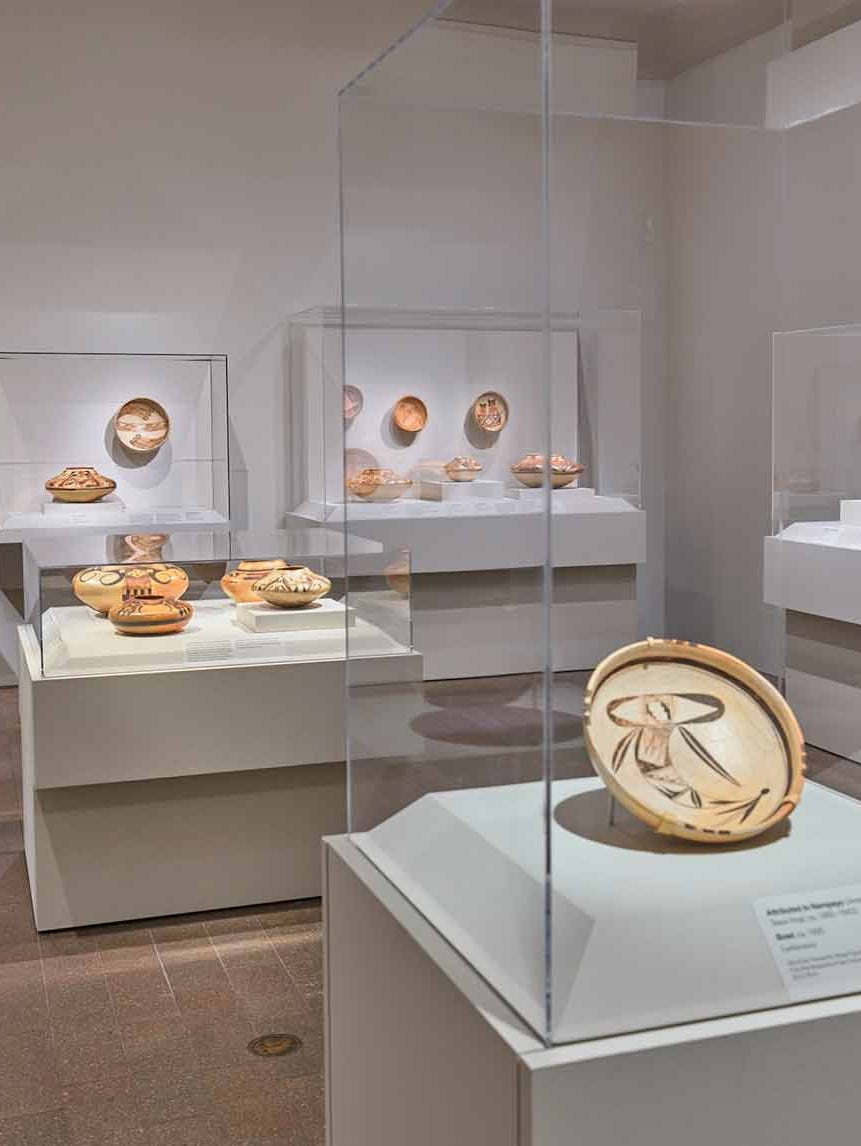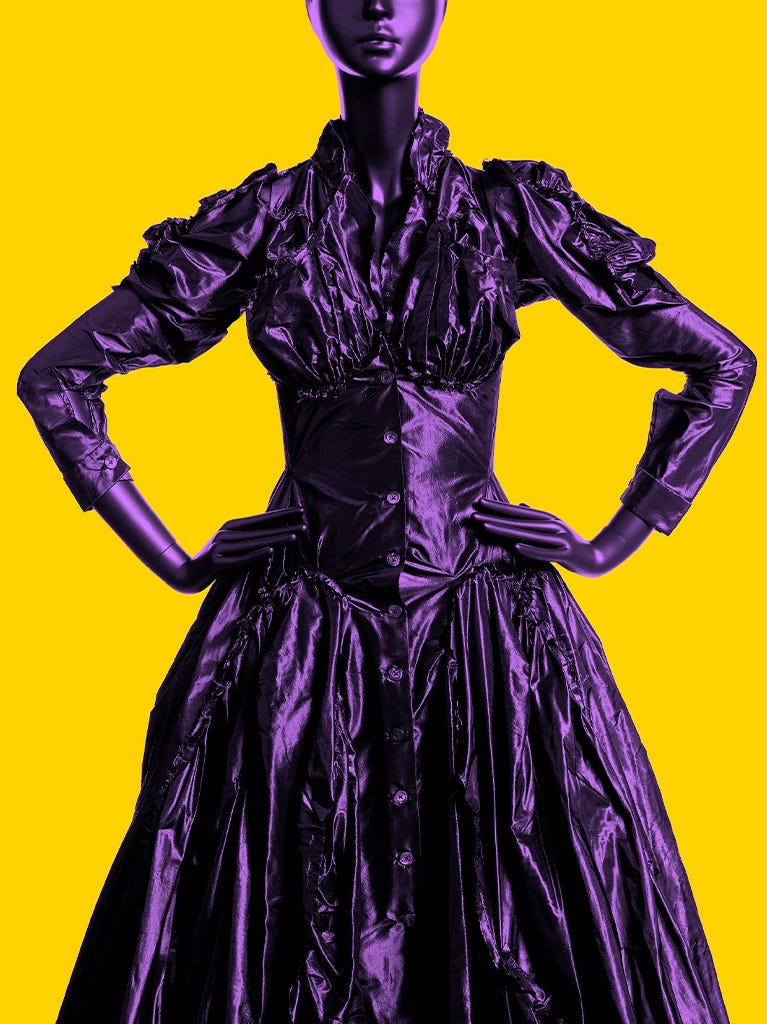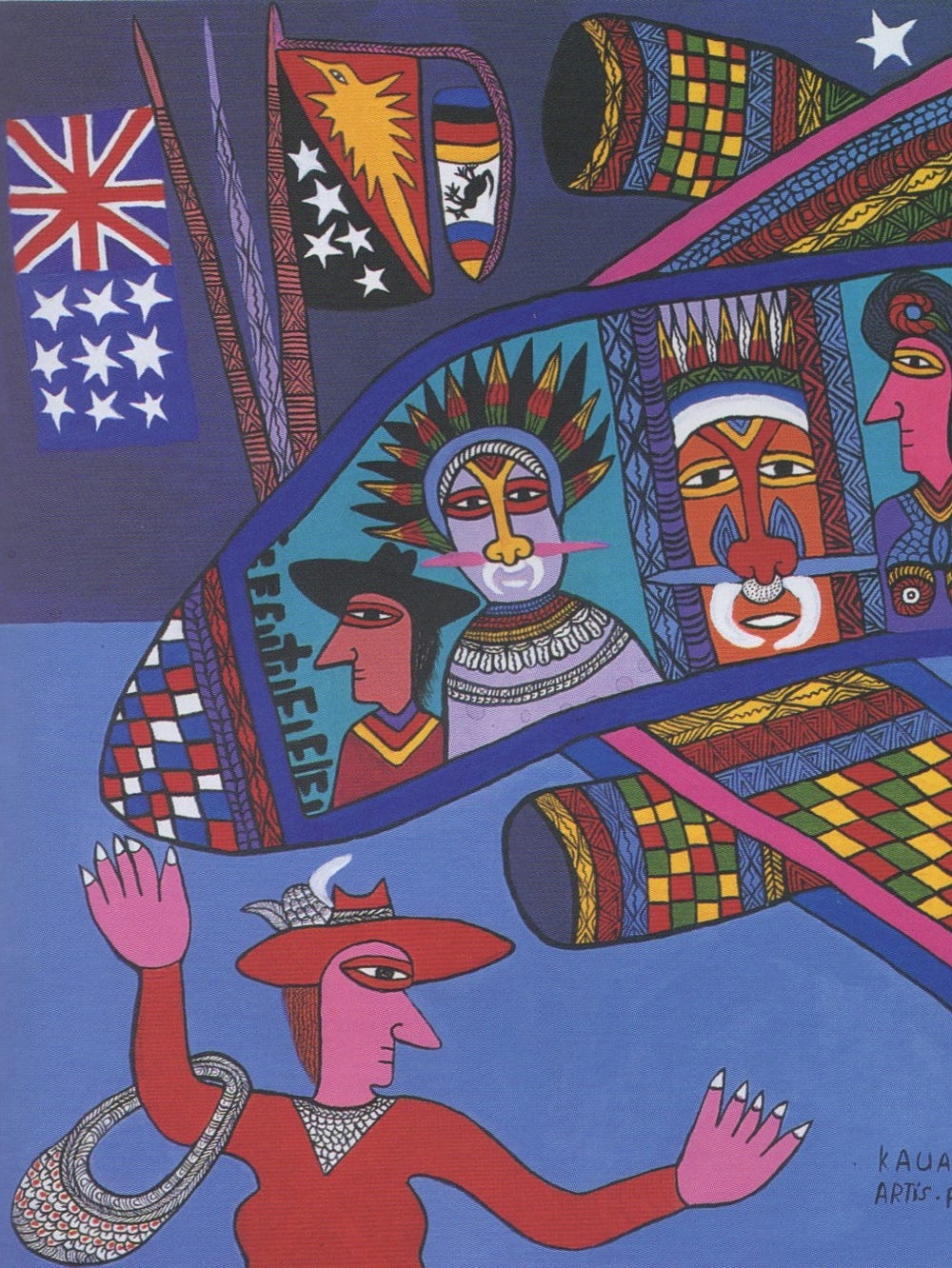From Three Continents: Textile Acquisitions, 1996 – 2000
Jump to
This exhibition, which features a richly varied selection of costumes and textiles from South America, Africa, and Asia, illustrates the many ways in which individual cultures have expressed their distinctive aesthetics and customary practices through cloth and clothing. At the same time, the exhibition offers the viewer an opportunity to observe common themes underlying the use of cloth in most pre-literate societies: the importance of textiles and costume in ceremonial and ritual life, in honoring the dead and ensuring their protection of the living, and in conveying identity, whether group or individual.
Highlights of the exhibition include a superb Colonial period tapestry from Peru. Woven a century and a half after the Conquest, the tapestry is a masterful blend of Spanish and indigenous design, iconography, color, and technique. A rare talismanic shirt from Sumatra, decorated with a calligraphic design known as tulisan Arab (Arab writing), is an equally intriguing fusion of distant artistic traditions, combining a design inspired by woven silks from Ottoman Turkey with the batik technique of Indonesia. Also on exhibition is an elaborate Egungun, a ceremonial costume from Nigeria made up of cloth bands sewn layer upon layer all set into swirling motion as the wearer dances. These dazzling displays of color and cloth are the work of Nigeria’s Yoruba peoples, who wear them in annual masking spectacles honoring the memory of their ancestors. Throughout the exhibition, headgear, a universal component of costume and a new collecting focus for the textile department, adds color, texture, and three-dimensionality to the exhibition with examples representing cultures from the Amazon to Central Asia.


